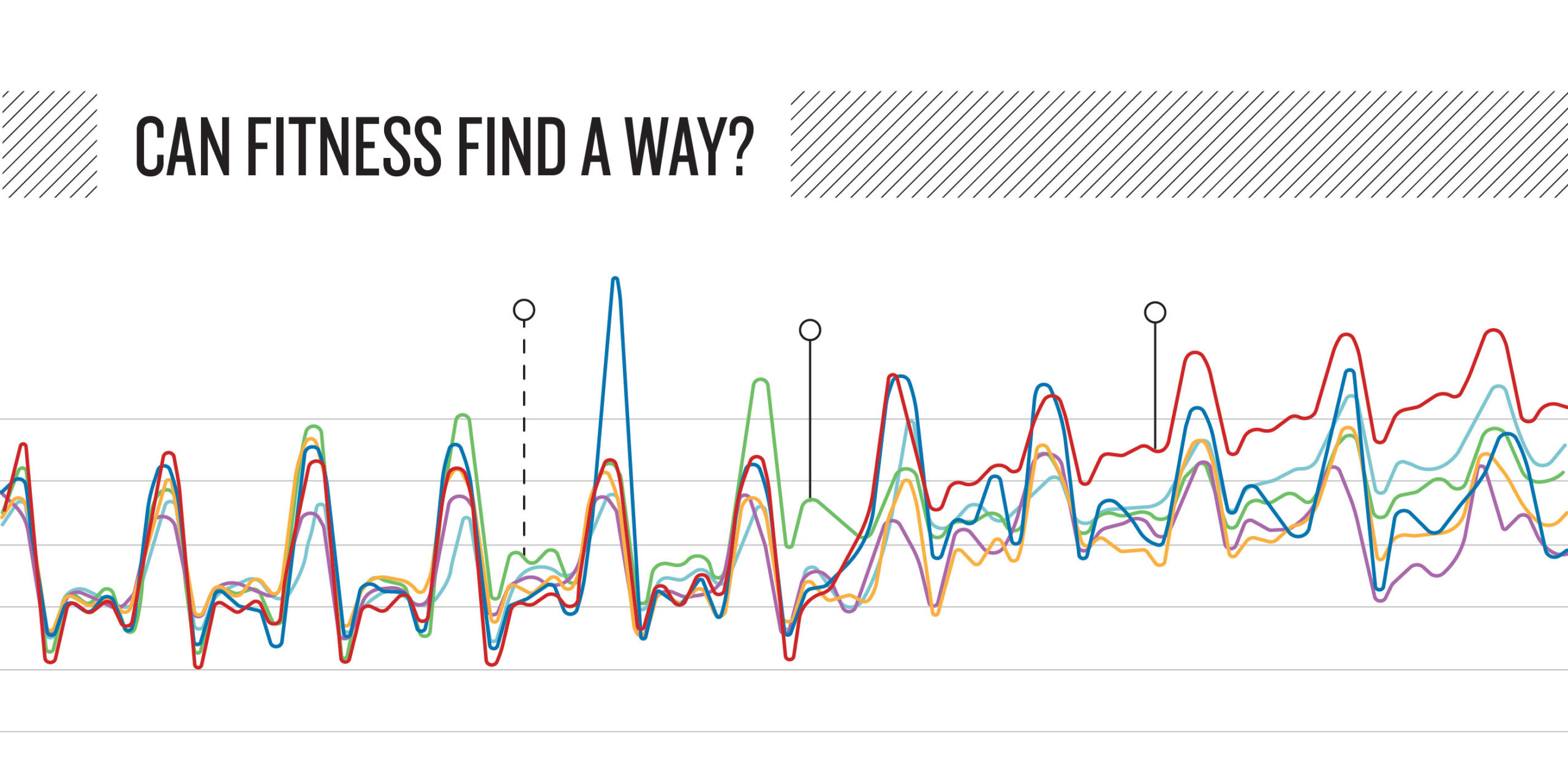
The Global Pandemic and Active Lifestyles
Seismic shifts in human activity are happening around the world. During this pandemic crisis, we at Garmin consider it our duty to bring this information to the public.
Just over a month ago, 23rd March to be exact, the UK Government delivered an important press conference declaring a lockdown was to take effect immediately to help protect the NHS and our most vulnerable from COVID-19. According to activity tracking data from the millions of registered Garmin users, this fateful date was a turning point, marking a major shift in human activity.
To fully understand the shift in behaviour within our community and the remarkable changes in the types of sports and exercises in which people were choosing to engage, we’ve taken a look at what’s happening in Europe. Specifically, the top five European countries by confirmed coronavirus cases: Italy, Spain, France, Germany and the UK. To gauge the scale of atypicality, we’ve also included Sweden in our data pull, where significantly fewer restrictions are in place and the physical distancing enforcements are more minimal.
As we look at the data from millions of Garmin smartwatch wearers, it’s important we advocate our own approach and methodology. We believe that reporting only on aggregate step count does not tell the complete story. While this number is down in every country, we caution against using this data set alone to suggest that people are moving less. Here’s why:
Take, for example, a woman who’s quarantined in a 120-square-metre apartment in Italy. While she may be logging a very low daily step count due to the physical confinement, she could also be cycling in place on a virtual trainer for 20 kilometres a day. Has her activity level decreased because of the pandemic? No. She’s actually moving more. She’s just changed her routine because of circumstance.
Accuracy, perspective and the ability to dive deeper into the data are critical to painting a true picture of what’s happening in our world. Garmin wearable devices have more than 20 different built-in sports and activity apps. This vast feature set combined with an expansive global user base doesn’t just tell us if people are moving. It tells us how they are moving.
Now let’s look at the data.
Each activity trend visualisation shows six European countries, selected for the aforementioned reasons. National lockdowns began taking effect on March 9 in Italy, with the other countries implementing restrictions in the following days. For a consistent and clear picture, we’ve used March 9 as a midpoint and compared the five weeks prior and five weeks after to determine percentage increases and decreases. Although not visualised, 2019 trends over the same time period were crosschecked to ensure seasonal trends were differentiated from those driven by COVID-19 related events.
Cycling
Let’s start with indoor cycling. Our hypothetical scenario presented above appears to be the surprising reality in France, Italy and Spain, where historically strict stay-at-home guidelines are in place. When comparing the pre- and post-lockdown phases in France, we’re seeing a remarkable 157% increase in the activity. Spain and Italy are reporting record indoor cycling highs as well, with 273% and 309% increases, respectively. Again, the magnitude of this shift cannot be understated – we are witnessing historically steep increases in an activity that typically decreases in the spring. It’s never happened before.
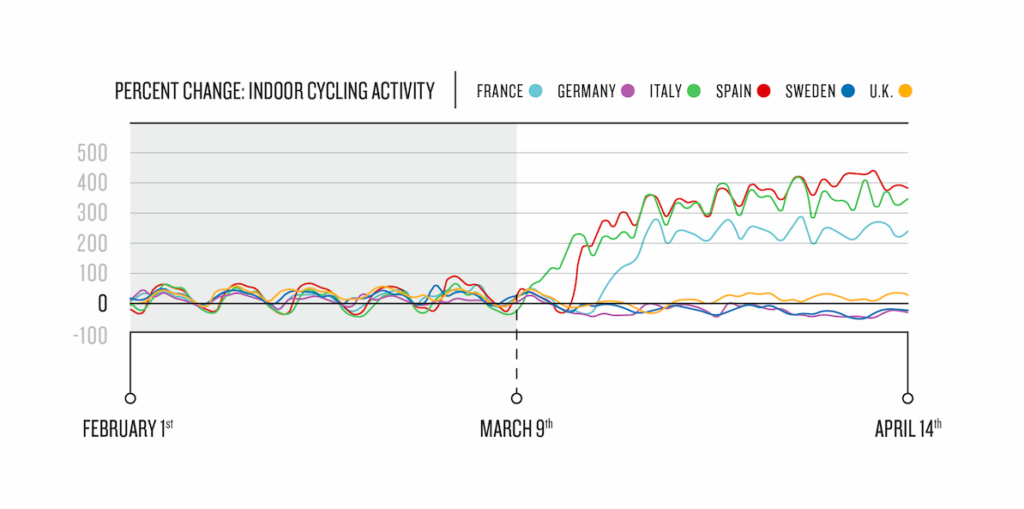
Worth noting: A large portion of indoor cyclists are virtual riding with smart trainers. This means they’re syncing their activity with a third-party platform such as Zwift, which allows users and their connections to ride together virtually throughout the world. So when you hear platitudes like “staying apart brings us together,” you can rest assured that for cyclists, it really is true.
Additionally, as more people log indoor cycling activities, we’re seeing the average distance per ride increase, which could indicate a newfound motivation to “beat” the impositions of the pandemic. Spain is seeing an incredible 41% average distance per ride increase. Meanwhile, Germans, despite having a slight decline in the overall activity trend, are still going on longer rides with a 12% average distance per ride increase. The March 1 spike in Sweden correlates with the Vasaloppet ski race – our hypothesis here is that many people were indoor cycling instead, as a proxy for participating in the race.
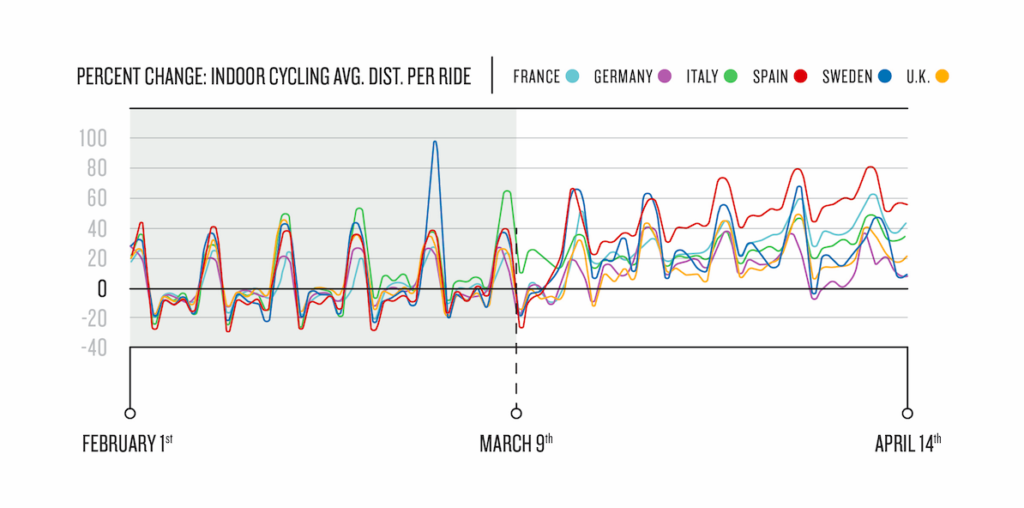
When we look at outdoor cycling in Germany, UK and Sweden, the trendline indicates a clear movement outside. In Germany alone, we’re seeing a 153% increase in outdoor cycling. During the same time period in 2019, Germany only saw a 36% increase. It’s entirely within the realm of possibility that psychological factors, such as a desire to be more active in the face of adversity, could be at play here. Additionally, this trendline also points out how well stay-at-home orders are being followed in France, Italy and Spain.
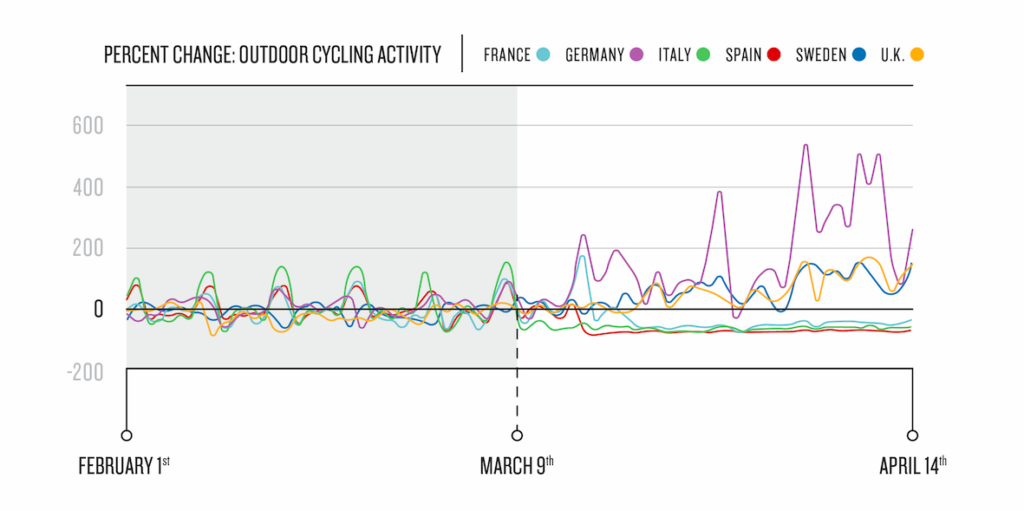
General Fitness Workouts
But what about the masses? After all, not everyone is a cyclist. For this perspective, we turn to fitness equipment activity data. This includes activities uploaded using any of the following built-in profiles on a Garmin device: elliptical workout, indoor cardio, indoor rowing, stair machine and strength training. The results, once again, are startling.
Italy has seen a 105% increase in fitness equipment activities when comparing the pre- and post-lockdown time periods. People in France, Spain and the UK are also working out more with categorical increases of 80%, 93% and 8%, respectively. All of this seems to indicate that those living in countries with the most extreme lockdown restrictions are still finding ways to move.
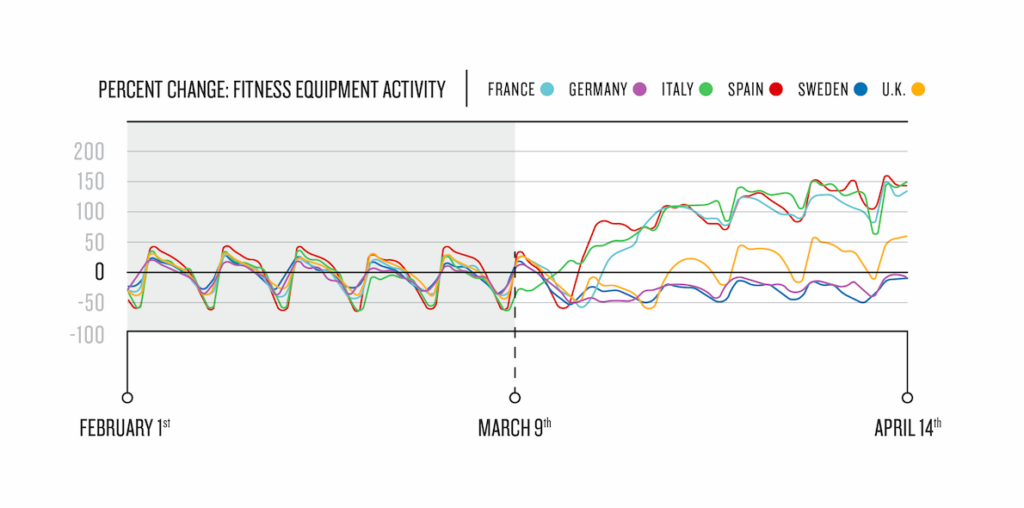
Golf
If you want to golf, go to Sweden. In fact, Sweden’s post-winter migration to the courses is even stronger right now than in 2019. The Northern European kingdom is in the midst of an extraordinary 741% increase in golfing activity. This figure is even more notable when considering the 26% decrease in the UK, a place where popularity of the sport is high, but where the British Open (scheduled for June) was recently cancelled.
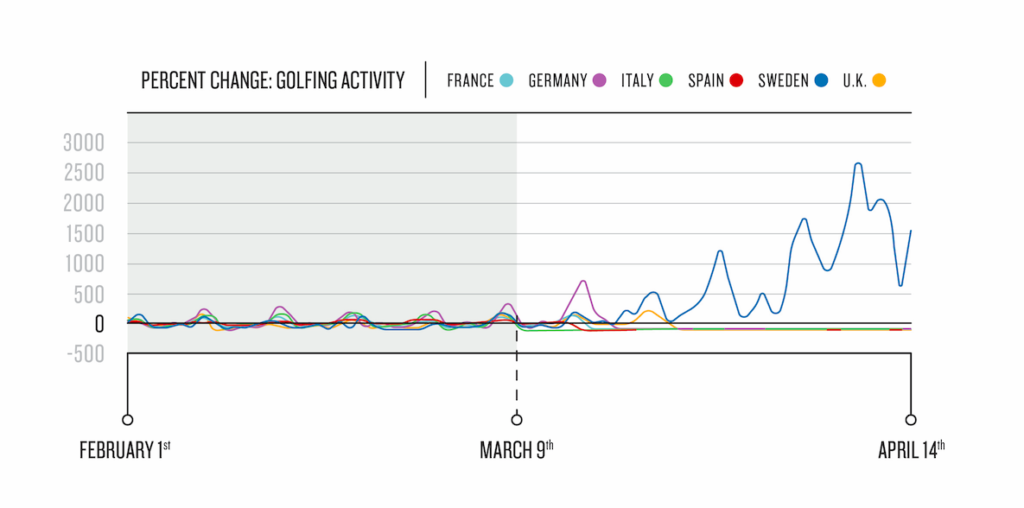
Running
And what about running? It’s the most popular and typically shared springtime activity. In Spain and Italy, where countrywide lockdowns are most extreme, outdoor running has dropped significantly with respective decreases of 68% and 42%.
A deeper dive into the data tells us that people in the countries with the highest restrictions are actually taking it to the treadmill, and in many cases, virtual running too. Italians, Spaniards and the French are uploading running activities in record numbers, with respective country increases of 130%, 84% and 18%.
So, what’s the deal with runners in Germany, Sweden and the UK? Well, the data tells us that they are still behaving differently. In every country, those who are running outside are running shorter distances. From this we can surmise that even Germans, Swedes and British runners, despite having more lax stay-at-home restrictions, are still limiting their outdoor exposure. So while indoor running is on the rise in most places, outdoor running is still happening – just a little closer to home these days.
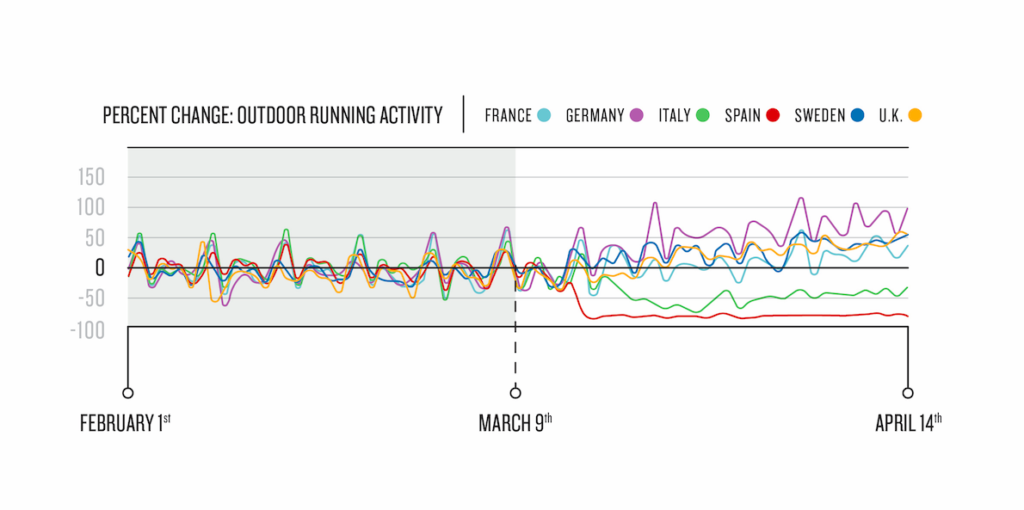
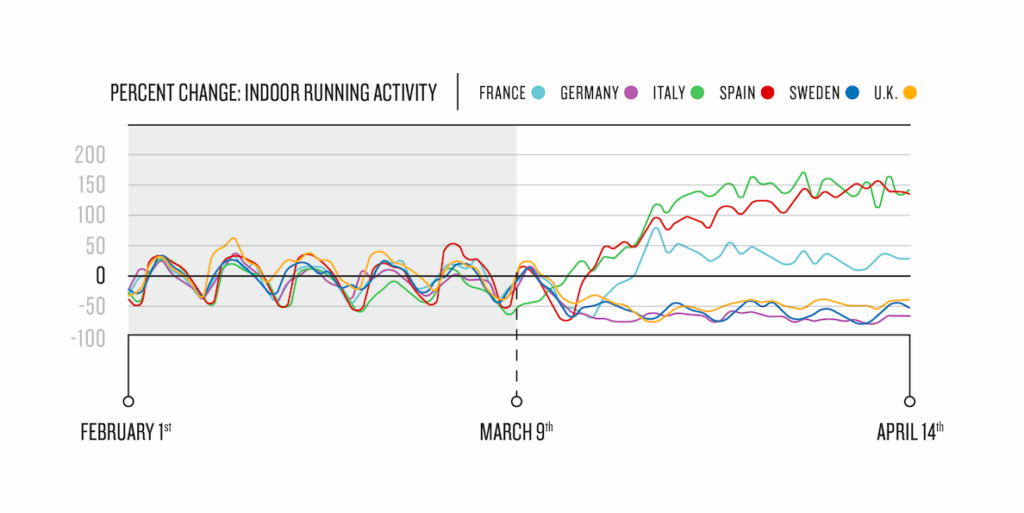
Swimming
When we look at the data for swimming, it’s perhaps most interesting in that the drop-off timeline mirrors the lockdown dates instituted by each country. One by one, as each country announced their specific shelter-in-place orders, their swimmers stopped swimming. All of this holds until you get to Sweden, where looser restrictions appear to have resulted in a much more modest decrease in the activity.
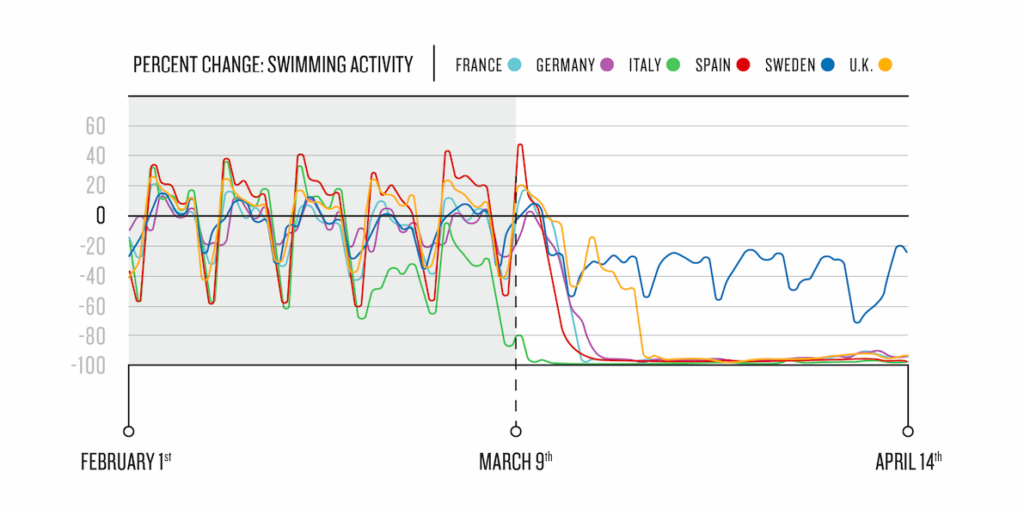
Floor Climbing
We end on floor climbing. Not because it’s the first thing you think of when considering physical activity during a global pandemic, but because it’s the last. And according to the data, it’s happening in Spain, France and Italy. A lot.
Important to note: Floor climbing is different than the stair machine activity covered earlier in the fitness equipment activity results. Here we’re referring to people specifically running up and down stairs in their apartments or houses. In France this activity has increased by 103%. In Italy, it’s skyrocketed 572%. And in Spain, climbing stairs has increased by an astounding 900%.
Of all the activity trend shifts, this is perhaps the most intriguing and also encouraging. Despite the confinements imposed by shelter-in-place orders, a record number of people are refusing to let their physical health suffer. No fitness equipment? No problem. We still have stairs.
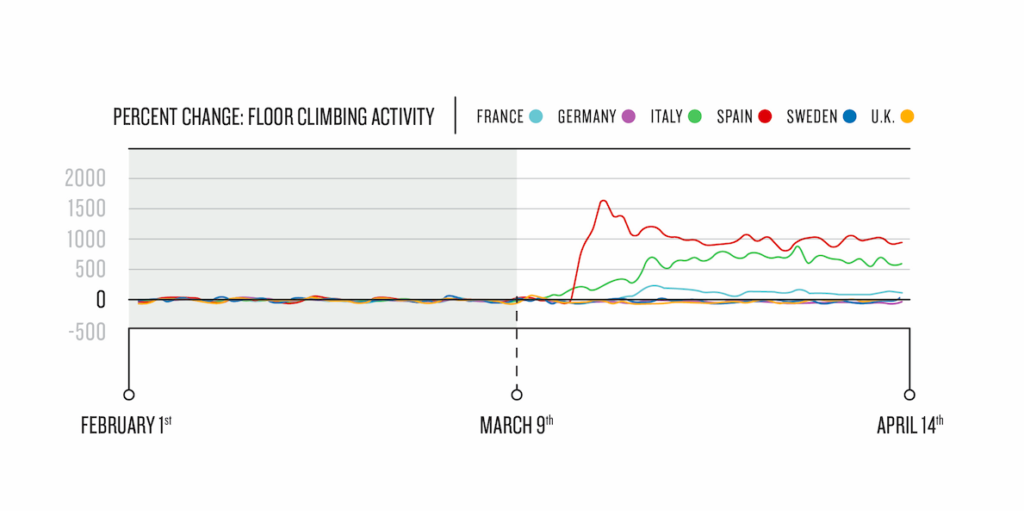
In Summary, Fitness Is Finding a Way
As we stated in our first activity trend publication, while the numbers we’re seeing are concrete data, the key takeaways we’re presenting here are a subjective analysis based on our insights as industry experts. Every country is experiencing lockdown restrictions in different ways and at different levels, so we will continue to assess the data with this context in mind.
The
coming months are unpredictable. As people around the world grapple with the
impact of the pandemic on their active lifestyles, we’ll provide updates to
help educate and inform. It’s important. Not because people need to know what’s
happening, but because we believe the single most important takeaway, so far, is
that people are still moving forward through the adversity.
At Garmin we call it the innate human desire to “beat yesterday.” It truly is
an inspiring feat. And one that perhaps carries even more relevance today than
ever.




